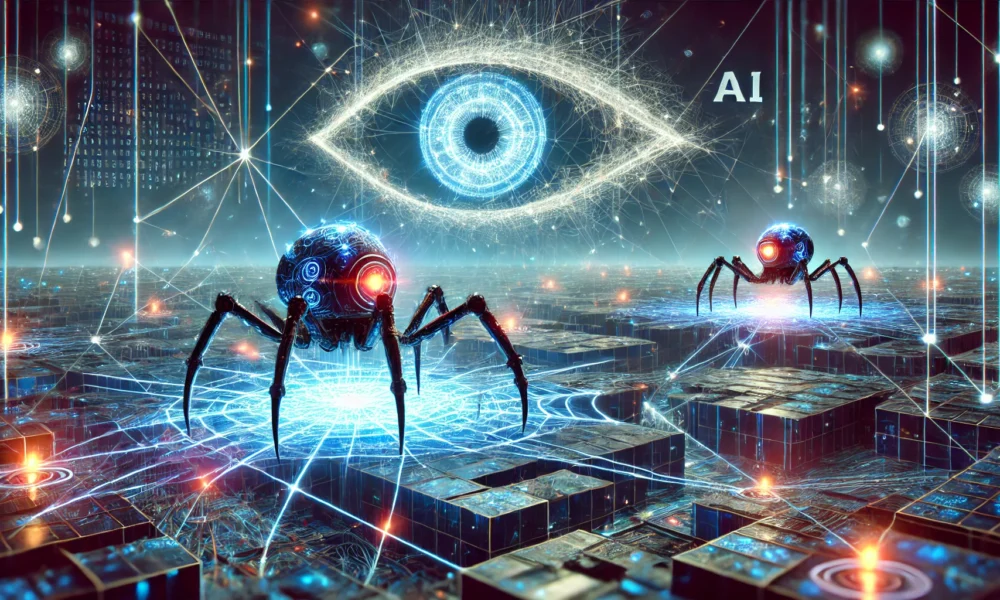The Influence of AI-Powered Web Crawlers on the Digital Landscape
The online realm has always been a platform for creativity and knowledge sharing. However, the rise of artificial intelligence (AI) has brought about AI-powered web crawlers that are reshaping the digital world. These bots, deployed by major AI firms, scour the internet for a wealth of data, from articles to images, to fuel machine learning models.
While this data collection drives AI advancements, it also raises concerns regarding data ownership, privacy, and the livelihood of content creators. The unchecked proliferation of AI crawlers threatens the essence of the internet as an open, fair, and accessible space for all.
Exploring the Role of Web Crawlers in Modern Technology
Web crawlers, also known as spider bots or search engine bots, play a crucial role in navigating the internet. These automated tools gather information from websites to enhance search engine indexing, making websites more visible to users. While traditional crawlers focus on indexing for search engines, AI-powered crawlers take data collection a step further by gathering vast amounts of information for machine learning purposes.
The advent of AI crawlers has brought forth ethical dilemmas concerning data collection practices, privacy, and intellectual property rights. The indiscriminate data gathering by AI bots poses challenges for small websites, increases costs, and raises questions about digital ethics.
Navigating Challenges Faced by Content Creators in the Digital Age
The emergence of AI-driven web scraping is altering the landscape for content creators who rely on the internet for their livelihood. Concerns about data devaluation, copyright infringement, and ethical data usage have become prevalent in the digital space.
Content creators are grappling with the devaluation of their work and potential copyright violations resulting from AI scraping. The imbalance between large corporations and independent creators has the potential to reshape the internet’s information ecosystem.
Protecting the Rights of Content Creators in the Digital Era
As AI-powered web crawlers gain prominence, content creators are advocating for fair compensation and legal protection of their work. Legal actions, legislative efforts, and technological measures are being pursued to safeguard creators’ rights and preserve the open and diverse nature of the internet.
The intersection of AI innovation and content creators’ rights presents a complex challenge that requires a collective effort to maintain a balanced and inclusive digital space.
FAQs:
1. Why is the open web at risk in the age of AI crawlers?
AI crawlers have the ability to extract large amounts of data from websites at a rapid pace, leading to potential privacy violations and data abuse. This poses a threat to the open web’s ethos of free and unrestricted access to information.
2. How do AI crawlers pose a threat to user privacy?
AI crawlers can extract sensitive personal information from websites without consent, putting user privacy at risk. This data can be used for targeting users with personalized ads or even for malicious purposes such as identity theft.
3. What impact do AI crawlers have on website owners?
AI crawlers can scrape and duplicate website content, undermining the original creators’ ability to monetize their work. This not only affects their revenue streams but also devalues the quality of their content in the eyes of search engines.
4. Are there any legal protections against AI crawlers?
While there are laws in place to protect against data scraping and copyright infringement, the fast-evolving nature of AI technology makes it difficult to enforce these regulations effectively. Website owners must remain vigilant and take proactive measures to safeguard their content.
5. How can website owners protect their content from AI crawlers?
Website owners can implement safeguards such as CAPTCHA challenges, bot detection tools, and IP blocking to deter AI crawlers. Additionally, regularly monitoring website traffic and setting up alerts for unusual activity can help detect and mitigate potential threats in real-time.
Source link



